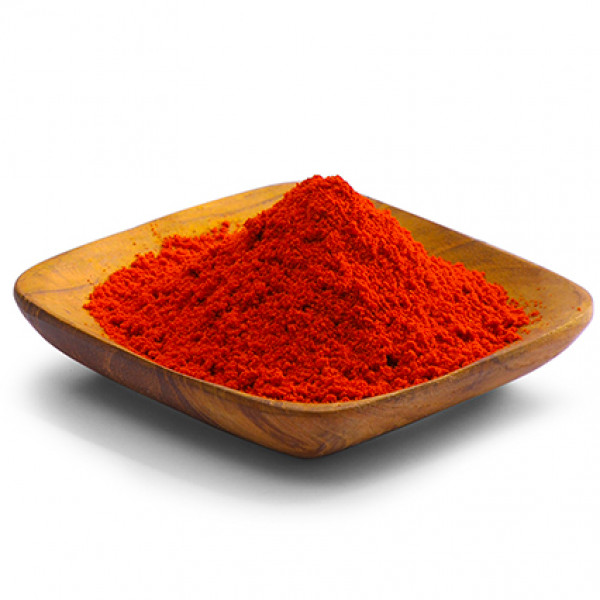
19, Apr 2025
Korean Red Chili Powder (Gochugaru) – The Soul of Korean Cuisine
Introduction to Korean Red Chili Powder (Gochugaru)
When you think of Korean food, the vibrant red color and bold flavors likely come to mind. The secret behind this? Gochugaru (Korean red chili powder) – the essential ingredient that gives Korean dishes their signature taste and appearance.
Unlike other chili powders, Gochugaru offers:
✅ A unique sweet-smoky flavor with moderate heat
✅ A coarse, flaky texture (unlike fine powders)
✅ Sun-dried authenticity that enhances fermentation
In this comprehensive guide, we’ll explore:
- What makes Gochugaru special?
- How it differs from Kashmiri/Mexican chili powders
- Best uses in Korean cooking
- Health benefits & buying tips
- FAQs (substitutes, heat level, storage)
What Makes Gochugaru Unique?
1. Flavor Profile
🌶️ Moderate heat (4,000-8,000 SHU) – hotter than paprika but milder than cayenne
🍯 Naturally sweet with subtle smokiness from sun-drying
🍎 Fruity undertones from Korean chili varieties
2. Texture Varieties
- Coarse (Gul Gochugaru) – Best for kimchi & stews
- Fine (Jung Gochugaru) – Ideal for sauces & marinades
- Flakes (Deol Gochugaru) – Perfect garnish
3. Traditional Production
☀️ Sun-dried (not oven-roasted) for deeper flavor
🇰🇷 Primarily made from Korean “taeyangcho” peppers
🌱 Often organically grown with no additives
Gochugaru vs Other Chili Powders
| Feature | Gochugaru | Kashmiri Chili | Mexican Chili | Paprika |
|---|---|---|---|---|
| Heat Level | Medium (4K-8K SHU) | Mild (1K-2K SHU) | Hot (15K-30K SHU) | Mild (0-500 SHU) |
| Texture | Flaky | Fine powder | Fine powder | Fine powder |
| Flavor | Sweet-smoky | Mild, earthy | Spicy, bold | Sweet, mild |
| Best Use | Kimchi, gochujang | Curries, tandoori | Mole, tacos | Garnish, stews |
Pro Tip: For authentic Korean flavor, never substitute with regular chili powder!
Essential Korean Dishes Using Gochugaru
1. Kimchi (Fermented Spicy Cabbage)
🥬 The #1 use of Gochugaru
🌶️ Gives that signature red color and tangy heat
🦠 Boosts probiotics through fermentation
2. Gochujang (Korean Chili Paste)
🧂 Fermented chili paste base
🍯 Sweet+spicy+umami flavor bomb
🍲 Used in bibimbap, tteokbokki
3. Tteokbokki (Spicy Rice Cakes)
🍡 Chewy rice cakes in spicy sauce
🔥 Gochugaru provides the heat base
🥛 Often paired with creamy sauces
4. Bulgogi & Marinades
🥩 Tenderizes meat while adding flavor
🧄 Combines with soy, garlic, pear
🍖 Essential for Korean BBQ
Health Benefits of Gochugaru
🔥 Metabolism Boost – Capsaicin increases fat burning
❤️ Heart Health – Lowers bad cholesterol
🦠 Gut Health – Aids fermentation in kimchi
🛡️ Immunity – High in vitamin C & antioxidants
😊 Mood Enhancer – Releases endorphins
Nutritional Value (per 100g):
- Calories: 282
- Vitamin A: 76% DV
- Vitamin C: 143% DV
- Iron: 21% DV
Buying & Storage Guide
Choosing Quality Gochugaru:
- Look for bright red color (not dull/orange)
- Prefer coarse grind for authentic texture
- Check for “sun-dried” on label
- Avoid additives/preservatives
Storage Tips:
❄️ Refrigerate in airtight container
⏳ Lasts 6-12 months when stored properly
🌡️ Keep away from heat & moisture
People Also Ask (FAQs)
1. What’s the difference between Gochugaru and regular chili powder?
Gochugaru has flakier texture, sweeter flavor, and medium heat compared to fine, very spicy regular chili powder.
2. Can I substitute Gochugaru?
The closest substitute is aleppo pepper + smoked paprika mix (but not identical).
3. Is Gochugaru very spicy?
Moderate heat (4,000-8,000 SHU) – spicier than paprika but milder than cayenne.
4. Why is my Gochugaru not red?
Low-quality or old powder turns orange. Always buy vibrant red Gochugaru.
5. How long does Gochugaru last?
6-12 months if refrigerated in airtight container.
6. 고추가루를 대체할 수 있는 건 뭔가요?
가장 비슷한 건 아레프페퍼 + 훈제 파프리카 혼합물이지만 완전히 같진 않습니다.
7. 고추가루가 너무 매운가요?
중간 맵기 (4,000-8,000 SHU) – 파프리카보다 맵지만 카옌느보다는 덜 매움.
Conclusion: The Heart of Korean Flavors
Gochugaru isn’t just a spice – it’s the soul of Korean cuisine. From kimchi to bulgogi, this unique chili powder delivers the perfect balance of heat, sweetness, and umami that makes Korean food unforgettable.
Ready to cook with Gochugaru? Try making kimchi or tteokbokki this weekend!
- 0
- By admin
- April 19, 2025 07:17 AM
